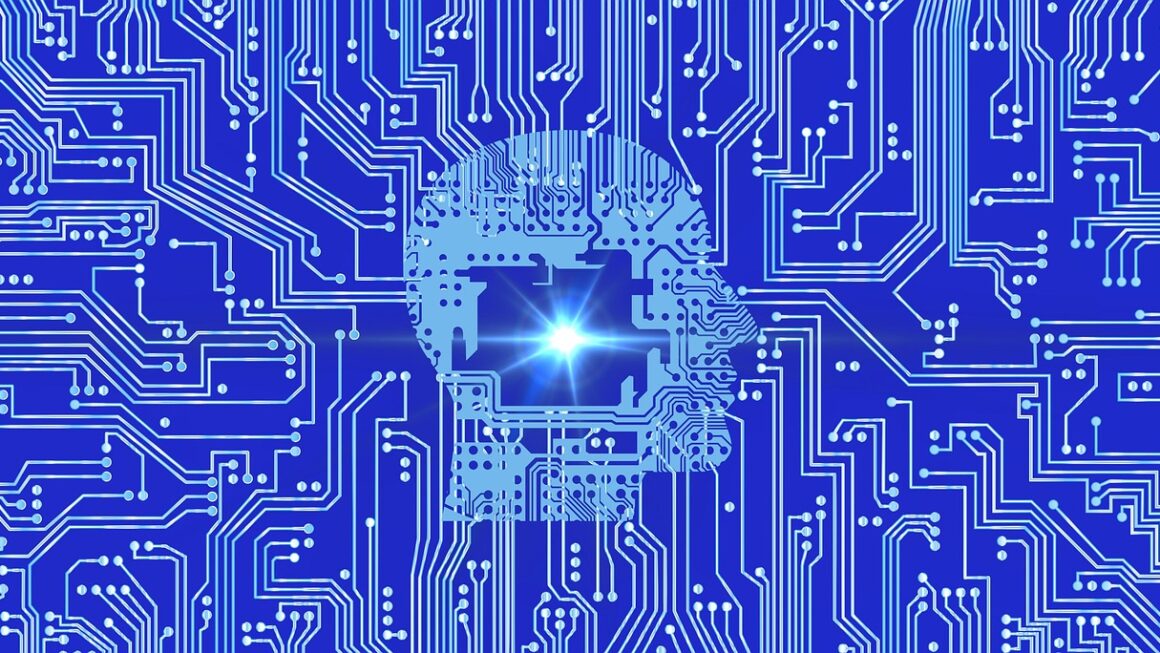The relentless march of technology continues, and at its forefront is Artificial Intelligence (AI). From self-driving cars to medical diagnoses, AI is no longer a futuristic fantasy, but a present-day reality transforming industries and reshaping our lives. This article delves into the latest AI innovations, exploring their impact and potential, offering practical insights for businesses and individuals alike.
The Current State of AI Innovation
Advancements in Machine Learning
Machine learning (ML), a core component of AI, has witnessed remarkable progress. Deep learning, a subset of ML using artificial neural networks with multiple layers, is enabling systems to learn complex patterns from vast datasets.
- Example: Image recognition systems powered by deep learning can now identify objects with near-human accuracy. Companies like Google and Facebook leverage this technology for tasks ranging from photo tagging to content moderation.
- Actionable Takeaway: Businesses should explore how deep learning can improve existing processes, such as automating image analysis for quality control or enhancing customer service through intelligent chatbots.
Beyond deep learning, other machine learning techniques are gaining traction. Reinforcement learning, where an agent learns to make decisions in an environment to maximize a reward, is proving effective in robotics and gaming.
- Example: DeepMind’s AlphaGo, which defeated a world champion Go player, demonstrates the power of reinforcement learning.
- Actionable Takeaway: Investigate reinforcement learning for applications that require automated decision-making in complex environments, such as optimizing supply chains or controlling autonomous robots.
Natural Language Processing (NLP) Breakthroughs
Natural Language Processing (NLP) is rapidly advancing, enabling machines to understand, interpret, and generate human language. Recent breakthroughs include transformer-based models like BERT, GPT-3, and beyond, which have significantly improved the performance of NLP tasks.
- Example: Chatbots powered by NLP can now engage in more natural and coherent conversations.
- Example: Automated translation services, such as Google Translate, have achieved remarkable accuracy, facilitating communication across languages.
- Actionable Takeaway: Utilize NLP to enhance customer support, automate document processing, and improve content creation workflows.
AI in Various Industries
Healthcare
AI is revolutionizing healthcare, with applications spanning diagnostics, drug discovery, and personalized medicine.
- Diagnostics: AI algorithms can analyze medical images (X-rays, MRIs) to detect diseases like cancer with high accuracy, often surpassing human radiologists.
Example: AI-powered tools are being used to screen for diabetic retinopathy and other eye diseases.
- Drug Discovery: AI accelerates the drug discovery process by predicting the efficacy and toxicity of potential drug candidates.
Example: AI is helping researchers identify promising drug targets for Alzheimer’s disease.
- Personalized Medicine: AI analyzes patient data to tailor treatment plans based on individual characteristics and needs.
Example: AI is used to predict which patients are most likely to respond to specific cancer therapies.
Finance
The financial industry is leveraging AI for fraud detection, risk management, and algorithmic trading.
- Fraud Detection: AI algorithms can identify suspicious transactions and prevent fraudulent activities.
Example: Banks use AI to monitor credit card transactions in real-time and flag potentially fraudulent purchases.
- Risk Management: AI assesses risk by analyzing vast datasets and identifying potential vulnerabilities.
Example: AI models are used to predict credit risk and optimize loan portfolios.
- Algorithmic Trading: AI-powered trading systems execute trades automatically based on predefined rules and market conditions.
Example: High-frequency trading firms use AI to exploit market inefficiencies and generate profits.
Manufacturing
AI is transforming manufacturing through automation, predictive maintenance, and quality control.
- Automation: AI-powered robots and systems automate repetitive tasks, increasing efficiency and reducing costs.
Example: Robots equipped with AI are used to assemble cars and other products.
- Predictive Maintenance: AI algorithms analyze sensor data to predict equipment failures and schedule maintenance proactively.
Example: AI is used to monitor the condition of industrial machinery and prevent breakdowns.
- Quality Control: AI-powered vision systems inspect products for defects with high accuracy.
* Example: AI is used to inspect circuit boards and other electronic components for manufacturing flaws.
Ethical Considerations and Challenges
Bias in AI
AI systems can perpetuate and amplify biases present in the data they are trained on. Addressing this bias is crucial to ensure fair and equitable outcomes.
- Example: Facial recognition systems have been shown to be less accurate for people of color.
- Actionable Takeaway: Implement rigorous data preprocessing techniques to mitigate bias and regularly audit AI systems for fairness.
Data Privacy and Security
AI relies on vast amounts of data, raising concerns about privacy and security. Protecting sensitive data is essential for maintaining trust and complying with regulations.
- Example: Companies must comply with GDPR and other privacy laws when using AI to process personal data.
- Actionable Takeaway: Implement strong security measures to protect data from unauthorized access and ensure compliance with privacy regulations. Consider using techniques like federated learning to train AI models on decentralized data without directly accessing sensitive information.
Job Displacement
The automation capabilities of AI raise concerns about potential job displacement. Preparing the workforce for the future of work is crucial.
- Example: AI-powered robots are automating tasks previously performed by human workers.
- Actionable Takeaway: Invest in education and training programs to help workers acquire the skills needed for jobs in the AI era. Focus on developing uniquely human skills, such as creativity, critical thinking, and emotional intelligence.
The Future of AI
Edge AI
Edge AI, which involves running AI models on devices at the edge of the network, is gaining momentum. This approach reduces latency, improves privacy, and enables real-time decision-making.
- Example: Autonomous vehicles use edge AI to process sensor data and make decisions locally without relying on a cloud connection.
- Actionable Takeaway: Explore edge AI for applications that require low latency and high reliability, such as autonomous systems and IoT devices.
Explainable AI (XAI)
Explainable AI (XAI) aims to make AI models more transparent and understandable. This is crucial for building trust and ensuring accountability.
- Example: XAI techniques can help explain why an AI model made a particular decision, allowing humans to verify and validate the results.
- Actionable Takeaway: Implement XAI techniques to improve the transparency and trustworthiness of AI systems, especially in critical applications such as healthcare and finance.
Quantum AI
Quantum AI, which combines quantum computing and AI, has the potential to solve problems that are intractable for classical computers.
- Example: Quantum AI could be used to accelerate drug discovery and optimize complex logistics networks.
- Actionable Takeaway: Stay informed about the advancements in quantum computing and explore potential applications of quantum AI for solving challenging problems.
Conclusion
AI innovation is rapidly transforming industries and reshaping our world. By understanding the latest advancements, addressing ethical considerations, and preparing for the future, businesses and individuals can harness the power of AI to create a more efficient, equitable, and prosperous future. The journey of AI is ongoing, and staying informed and adaptable is key to navigating its transformative impact.




